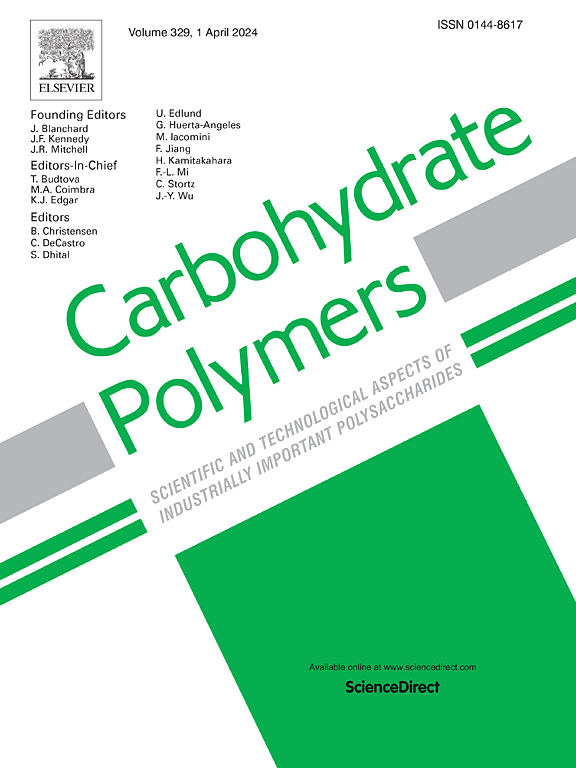Unravelling the mechanism of enzymatic resistance in different high amylose starch granules
IF 10.7
1区 化学
Q1 CHEMISTRY, APPLIED
引用次数: 0
Abstract
This study investigates the phenomenon that, in contrast to amylopectin-rich starch granules, high amylose starch (HAS) granules typically exhibit high hydrolytic resistance manifested as low density of enzyme attack sites on the starch granule surface. However, among the various types of examined HAS granules, we identified differences in enzymatic resistance. We associated this effect as a result of variations in specific rate of the enzymatic reaction, with intermediate affinity leading to the highest enzymatic efficacy characteristic for the Sabatier principle. However, a surprisingly low hydrolytic resistance, in fact the lowest among the investigated HAS, was found for amylose-only barley starch granules (97 % amylose). This behavior was connected with an optimal affinity of the applied model hydrolase, glucoamylase (GA), leading to the highest hydrolytic efficacy among the HASs. Exploration of surface structures by Fourier transform infrared (FTIR) spectroscopy revealed that larger starch granules with less ordered surface structures tended to exhibit optimum affinity for GA, and hence get degraded with higher catalytic activity and being less resistant. The findings improve our perception of the mechanisms that underlie hydrolytic enzyme resistance of HASs, providing implications for understanding and rationally design of enzymatically modified resistant starches.

揭示不同高直链淀粉颗粒的酶抗性机制
本研究研究了这样一种现象,即与富含支链淀粉的淀粉颗粒相比,高直链淀粉(HAS)颗粒通常表现出高的水解抗性,表现为淀粉颗粒表面酶攻击位点密度低。然而,在检查的各种类型的HAS颗粒中,我们发现了酶抗性的差异。我们将这种效应与酶促反应的特定速率变化联系起来,中间亲和力导致萨巴蒂尔原理的最高酶促功效特征。然而,令人惊讶的是,仅直链淀粉的大麦淀粉颗粒(97%直链淀粉)具有较低的水解抗性,实际上是所研究的HAS中最低的。这种行为与所应用的模型水解酶葡萄糖淀粉酶(GA)的最佳亲和力有关,从而导致HASs的水解效率最高。傅里叶变换红外光谱(FTIR)研究表明,淀粉颗粒越大,表面结构越无序,对GA的亲和力越高,因此降解的催化活性越高,抗性越低。这些发现提高了我们对HASs水解酶抗性机制的认识,为理解和合理设计酶修饰抗性淀粉提供了启示。
本文章由计算机程序翻译,如有差异,请以英文原文为准。
求助全文
约1分钟内获得全文
求助全文
来源期刊

Carbohydrate Polymers
化学-高分子科学
CiteScore
22.40
自引率
8.00%
发文量
1286
审稿时长
47 days
期刊介绍:
Carbohydrate Polymers stands as a prominent journal in the glycoscience field, dedicated to exploring and harnessing the potential of polysaccharides with applications spanning bioenergy, bioplastics, biomaterials, biorefining, chemistry, drug delivery, food, health, nanotechnology, packaging, paper, pharmaceuticals, medicine, oil recovery, textiles, tissue engineering, wood, and various aspects of glycoscience.
The journal emphasizes the central role of well-characterized carbohydrate polymers, highlighting their significance as the primary focus rather than a peripheral topic. Each paper must prominently feature at least one named carbohydrate polymer, evident in both citation and title, with a commitment to innovative research that advances scientific knowledge.
 求助内容:
求助内容: 应助结果提醒方式:
应助结果提醒方式:


